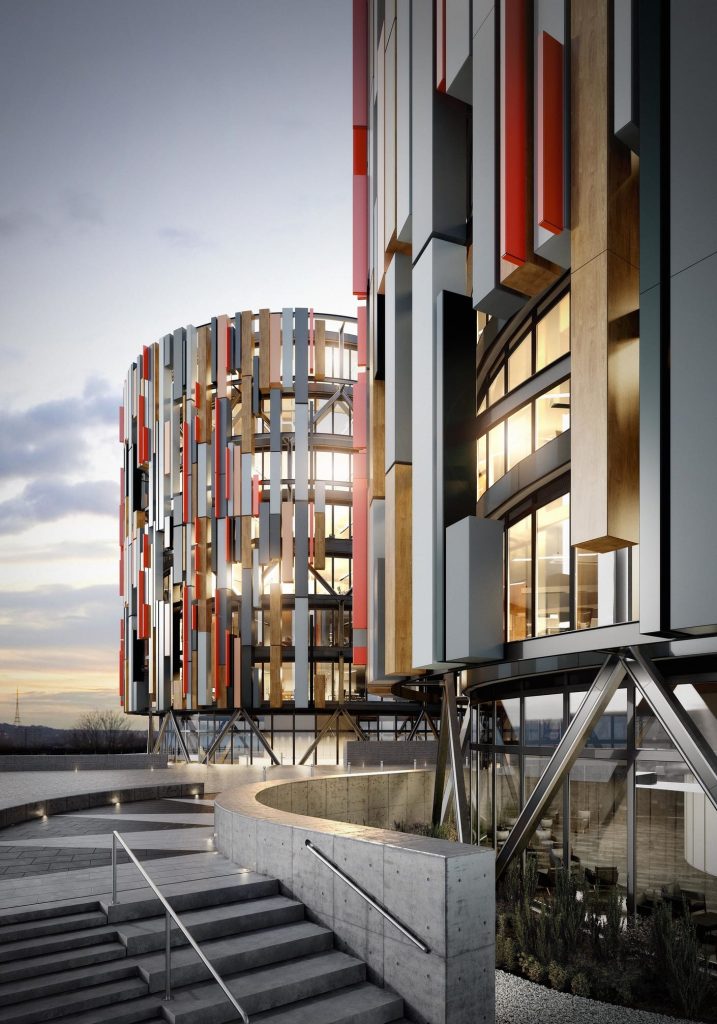
V-Ray render farms
Why choose a V-Ray render farm?
V-Ray, by Chaos, is a top-notch architectural rendering and visualisation software. It’s used to create high-quality 3D visualizations in multiple industries such as product design, furniture and even 3D art. The first version of V-Ray came out in 2000 and it has been updated and improved over the years so that it works as a plugin for over 10 kinds of software. V-Ray offers two rendering engines: CPU and GPU. The CPU version of the V-Ray renderer is simply called “V-Ray”, while the GPU version is called “V-Ray GPU”. V-Ray can integrate with 3ds Max, Sketchup, Maya, Rhino 3D, Unreal, Nuke, Cinema 4D, Houdini, Blender and so on.
Sometimes it can take a long time to render your work with just the rendering engine, so using a cloud rendering farm speeds up the process. Chaos offers V-Ray Benchmark – a performance measurement tool that assesses the hardware’s speed specifically when working with V-Ray. The benchmark includes two test scenes: one for V-Ray and another one for V-Ray GPU.

5 features of V-Ray rendering
- Need for additional hardware if your project is complex and needs to be processed within a short amount of time.
- Render times can be long without efficient hardware, render farms offer superior speed and performance.
- V-Ray GPU takes advantage of the graphics card, but it relies on the CPU.
- V-Ray GPU is not officially supported on macOS; choosing a render farm using GPU solves this.
- Since GPU technology is still far behind in terms of memory, using V-Ray GPU render engine requires an efficient NVIDIA graphics card.
System requirements for V-Ray
- Processor: 1st Gen Intel® Core™ or compatible processor with SSE4.2 support (x64)
- RAM: Minimum 8 GB RAM, recommended 64 GB RAM
- Operating system: Windows 10 or Windows 11 operating system.
- Autodesk® 3ds Max: 3ds Max® 2018, 2019, 2020, 2021, 2022, and 2023 (64-bit)
- GPU Acceleration: NVIDIA GPUs of Maxwell generation or later with the latest recommended video driver (for both CUDA and RTX – enabled cards). V-Ray Vision requires a Graphics card with DirectX 11 or DirectX 12 and Shader Model 5.0 capabilities.
© Chaos / Showcase
How to choose the best render farm for V-Ray?
When choosing a V-Ray render farm, you should consider: capacity, speed, scalability, security, costs, and customer support. Select Aura Computing’s cost-effective and secure rendering service and enjoy rendering with our scalable infrastructure; licenses included. More technical specifications here.
Our V-Ray render farm is fully equipped to support your rendering needs. We offer compatibility with major 3D software and rendering engines such as Autodesk 3ds Max, Autodesk Maya, Cinema 4D, Houdini, and many more.
Aura Computing’s dedicated system features powerful hardware, including Dual Intel Xeon 2680v4 with 28 cores and 128GB RAM. With this exceptional infrastructure, we ensure efficient rendering capabilities for Arnold. You can trust us to handle large workloads and deliver fast, high-quality rendering results for your projects.
Our V-Ray render farm have a free demo, so try it out.
CPU & GPU Cores
Supported Softwares
Get in touch with us today
Want to know more about specific industries? See Rendering, Banking and Insurance, or Game Development pages for more details.